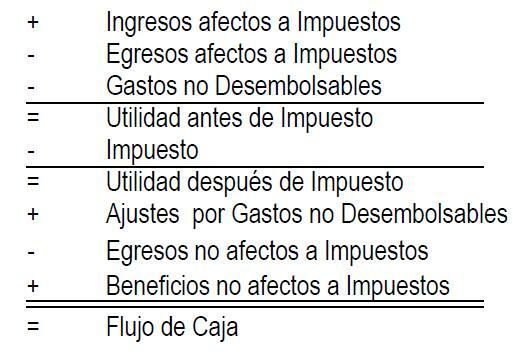The Delphi method is a methodology that is based on the predictive ability of expert judgment to respond to uncertain issues; To this end, questionnaires are addressed in rounds, guaranteeing anonymity to answer questions and reach a consensus of opinion.
He Delphi method It is a widely used methodology. to address complex problems or uncertain issues, where I know requires theintuitive expert judgment, to reach conclusions and facilitate decision making.

Advertisements
For this it is apply questionnaires in rounds guaranteeing anonymity that are then analyzed together to reach a consensus. This methodology can be implemented in different areas and providing a clearer view based on collective judgment.
To better understand how this methodology can be applied, let's see the following 3 examples of the Delphi Method.
Advertisements
In this article you will find:
What is the Delphi method?
He Delphi method is a forecasting technique that is based on a structured group communication processhe used to reach a consensus among a group of experts when research data is limited or ambiguous and expert judgment is needed.
For López Ernesto (2018) “The Delphi method makes it possible to structure a communicative process of various experts organized in a group-panel with a view to shedding light on a research problem.”
Advertisements
Therefore, the Delphi method is based on the predictive capacity of the experts' judgment, for which questionnaires guaranteeing anonymity to answer questions and reach a consensus of opinion.
One of the advantages of the Delphi method is that it allows obtaining the collective judgment of a group of experts. without allowing the dominant personality of an individual to influence the responses of the group. In addition, being a questionnaire-based method, it can be done remotely, which allows experts from all over the world to be included.
Advertisements
It is important to mention that the Delphi method has limitations; since, although it can reduce the range of answers, it does not guarantee that the final answer will be correct. Also, it can be a long and laborious process.
Phases of the Delphi method
The Delphi method is carried out through several rounds of consultation and feedback among a group of experts, each round it is based on the results of the previous one and although the number of rounds can vary, it generally covers the following phases:
Advertisements
- Definition of the problem and selection of experts: Before beginning the Delphi process, organizers should clearly define the problem or question to be addressed. They then select a group of experts based on their relevant knowledge and experience.
- First round – Initial consultation: Experts are asked to provide their opinions or forecasts on the problem at hand; this is often done through an open questionnaire, where experts can provide their opinions in a detailed and unrestricted manner.
- Second round – Feedback and review: The responses from the first round are summarized and returned to the experts along with a new questionnaire; this questionnaire often uses more structured questions, based on the answers from the first round, where the experts are asked to revise their initial responses in light of the responses of the the rest.
- Subsequent rounds – Consensus: Rounds of feedback and revision are repeated until consensus is reached or until responses no longer change significantly. The goal is to harness the collective wisdom of the group to come up with a more accurate answer or forecast about the problem at hand.
- Final analysis and report: Once a consensus has been reached or the process has been stopped, the results are analyzed and a final report is presented; this report can be used for decision making, strategic planning, or any other purpose relevant to the initial problem.
However, the specific implementation may vary depending on the circumstances and the goals of the process.
3 Examples of the Delphi Method
Some examples of the Delphi method could be:
Example of the Delphi method to predict the impact of climate change on agriculture
Suppose a group of researchers wants to use the Delphi method to predict how climate change will affect agriculture in the next 50 years. Here is how the process would be carried out.
- Definition of the problem and selection of experts: The researchers define the problem as “Predicting the impact of climate change on agriculture in the next 50 years”. They invite a panel of experts, including climatologists, farmers, biologists, and agricultural economists.
- First round – Initial consultation: The researchers send a questionnaire to the experts asking them to forecast how they think climate change will affect agriculture in the next 50 years. They can ask about specific topics, such as changes in growing seasons, the impact on different crops, economic implications, etc.
- Second round – Feedback and review: Researchers collect responses, identify common predictions and discrepancies, and summarize these responses. They then send this summary to the experts, along with a new questionnaire. In this second round, the experts are asked to review the summary responses and reconsider or adjust their initial predictions if necessary.
- Later rounds – Consensus: The feedback and review process is repeated until the responses begin to converge and consensus is reached, or until it is decided that further consensus is not going to be reached and the process is stopped. process.
- Final analysis and report: Researchers analyze the final responses, write a report summarizing the expert panel's consensus predictions about the impact of climate change on agriculture in the next 50 years, and can suggest possible adaptation strategies based on these predictions.
Example of the Delphi Method for a projection of development of future technologies
- Definition of the problem and selection of experts: The question is “What will be the most important advances in artificial intelligence technology in the next 10 years?” A group of AI experts from industry, academia and government are selected.
- First round – Initial consultation: A questionnaire is sent to the experts asking about their projections for the advancement of AI in the next decade.
- Second round – Feedback and review: The responses are collected and summarized, identifying common and divergent themes. This summary, along with a new questionnaire, is sent to the experts for review.
- Subsequent rounds – Consensus: The process is repeated until the answers begin to converge and a consensus is reached.
- Final analysis and report: A final report is presented detailing the consensus projections for AI technology in the next decade.
Example of the Delphi method for urban infrastructure planning
- Definition of the problem and selection of experts: The question is “What infrastructures will be most needed in our city in the next 20 years?” Experts in urban planning, transport, water and sanitation, and energy are selected.
- First round – Initial consultation: Experts are requested to provide input on future infrastructure needs.
- Second round – Feedback and review: Responses are collected, areas of agreement and disagreement are identified, and experts are asked to review and reconsider their responses.
- Subsequent rounds – Consensus: The process continues until a consensus is reached on future infrastructure needs.
- Final analysis and report: A final report is presented with the agreed projections for urban infrastructure planning.
Bibliographic references
Lopez Gomez, E. (2018). The Delphi method in current educational research: a theoretical and methodological review. Education XX1, 21(1), 17-40, doi: 10.5944/educXX1.15536


